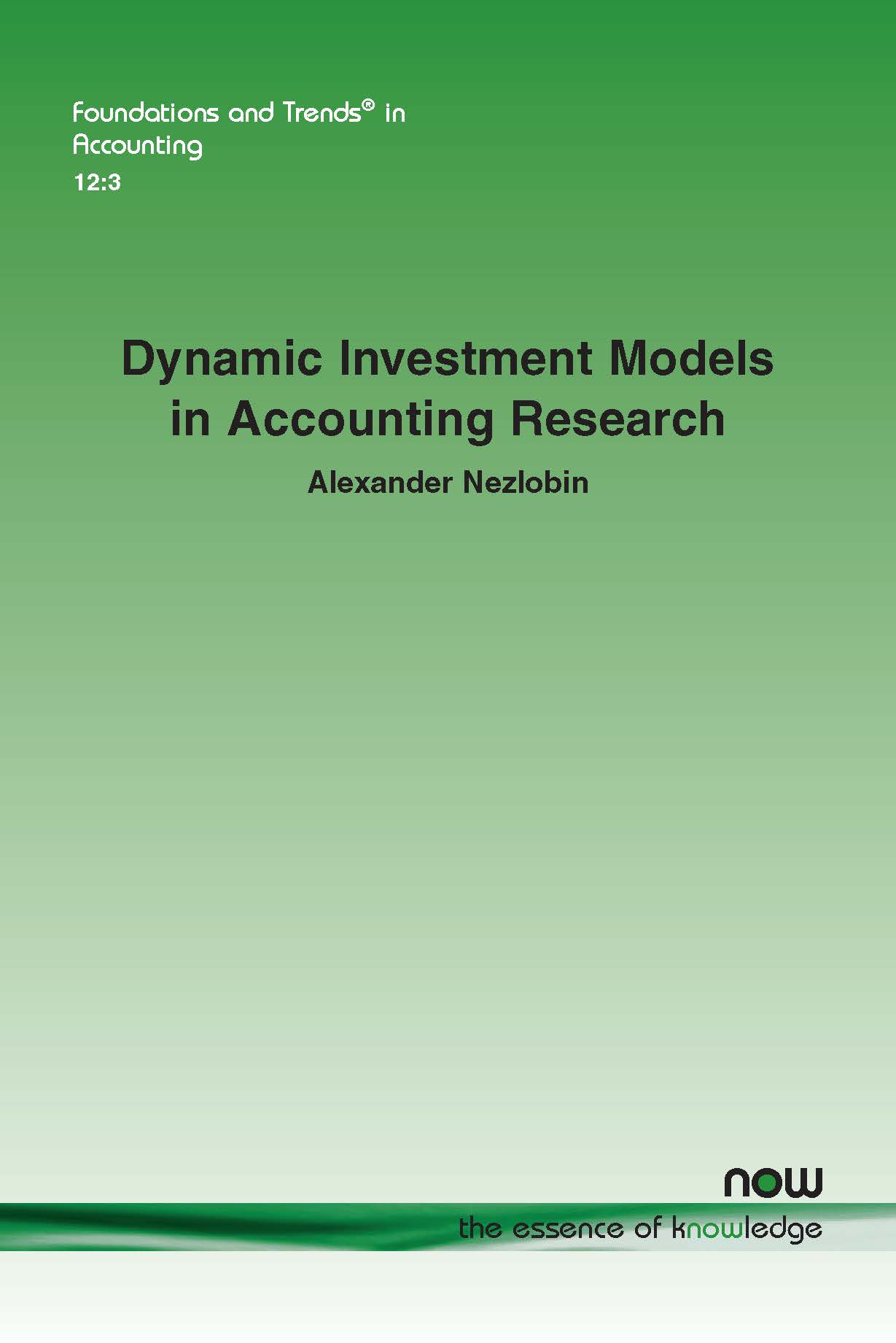Dynamic Investment Models in Accounting Research
Alexander Nezlobin, Haas School of Business, University of California, Berkeley, USA, nezlobin@haas.berkeley.eduAbstract
This monograph presents three variants of the neoclassical investment model and characterizes the firm's optimal investment policy, equity value, and the desirable properties of accrual accounting rules in each setting. Two main questions are considered: (1) What accounting rules result in the most informative financial statements from the perspective of investors seeking to value the firm's equity? and (2) What accounting rules can be efficiently used by shareholders in evaluating the performance of better informed managers? One accounting treatment, referred to as replacement cost accounting, achieves efficiency along both dimensions. The notion of replacement cost studied in this monograph corresponds closely to that of fair value, as defined in IFRS 13, in that it is defined as either (i) the current price of the capital goods in a perfectly competitive market, if such a market is available, or (ii) the hypothetical amount that would have to be incurred today to replace the current and future capacity of the capital goods in question. While the replacement cost rule is, in many settings, unique in providing the firm's shareholders with sufficient information for precise equity valuation, the problem of efficient performance measurement is generally less informationally demanding. For example, under certain plausible conditions, the owners can incentivize a better informed manager to make efficient investment decisions using the straight-line depreciation method.
Dynamic Investment Models in Accounting Research
Dynamic models of investment behavior are a natural setting for studying the desirable properties of accrual accounting rules. Dynamic Investment Models in Accounting Research presents three such models and discusses their applications to questions in accounting-based equity valuation and managerial performance measurement. The three models are closely related dynamic investment models. Section 2 studies the basic model where the firm periodically adjusts its capital stock in response to changing conditions in its product market, purchasing new capital goods when demand for its output improves and selling its existing capital goods when demand deteriorates. This model is perhaps the simplest variant of what is known as the neoclassical investment theory, and it captures one key feature of investment – the mismatch in timing between investment costs and their associated economic benefits. Section 3 studies a vintage capital model in which the productivity of the firm's capital goods is allowed to follow any arbitrary pattern. This section shows that the performance evaluation perspective on optimal accounting rules is generally less demanding than the equity valuation perspective. Section 4 reverts to the assumption of geometric productivity but relaxes the assumption of perfect reversibility. Section 4 demonstrates that, while replacement cost information is useful for equity valuation in both reversible and irreversible investment models, the nature of the relation between the firm's equity value and the replacement cost of its assets is fundamentally different between the two settings.
